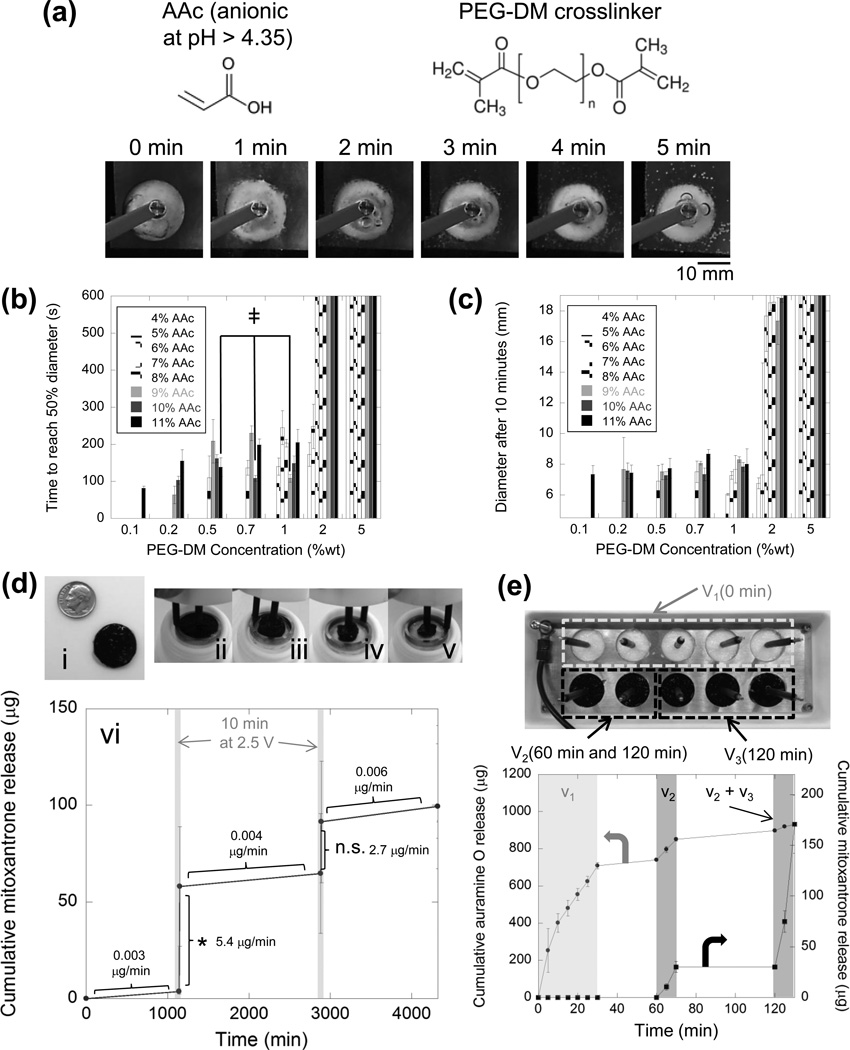Figure 4.
Cryogels composed of polyelectrolytic, biocompatible polymer exhibit electro-responsivity and are capable of delivering drugs in a voltage-triggered manner. a) More biocompatible polyelectrolytic cryogels were created using AAc crosslinked using PEG-DM and were capable of rapid electric collapse when exposed to 50 V in deionized water. The rate (b) and extent (c) of these cryogels’ electrical collapses are plotted versus the amount of AAc and PEG-DM used to construct the cryogel (see legend). ╪‘s indicate gels that present a local minimum in collapse rate as AAc in increased. d) 9%wt AAc, 1% wt PEG-DM cryogels were loaded with miotoxantrone (i) and electrically collapsed when exposed to 2.5 V in PBS (ii-v). Cumulative mitoxantrone release resulting from two 10-minute, 2.5 V pulses spaced 24 hours apart is plotted vs. time (vi). Release rates along each segment of the curve are provided on the graph and * indicates p < 0.05 when comparing delivery amounts before and after electrical stimulation. e) Cryogels containing two drugs (auramine O and mitoxantrone) could be integrated into arrays (top picture), from which the release profile of both drugs could be controlled with great flexibility (bottom graph). In (b) through (e), values represent mean and standard deviation ((b) and (c) N = 3, (d) and (e) N = 4).

